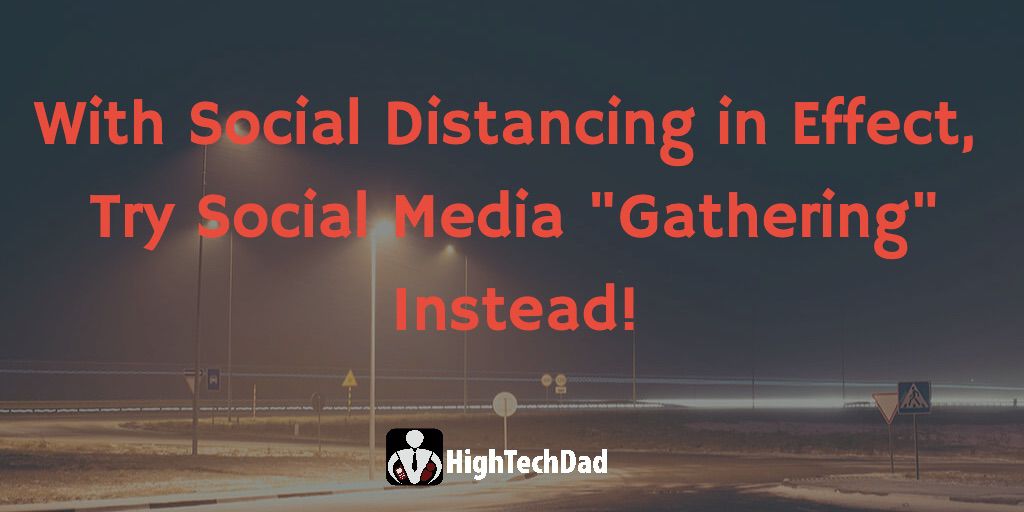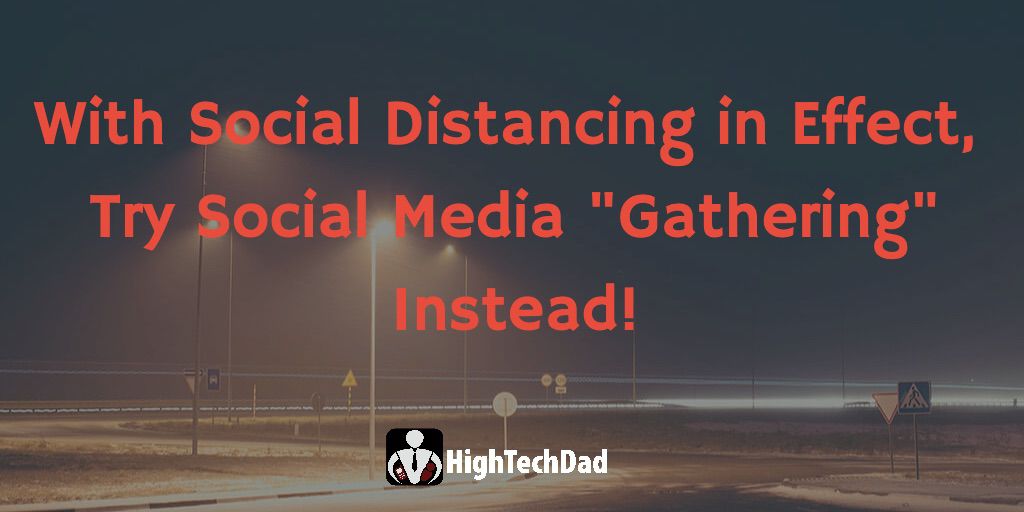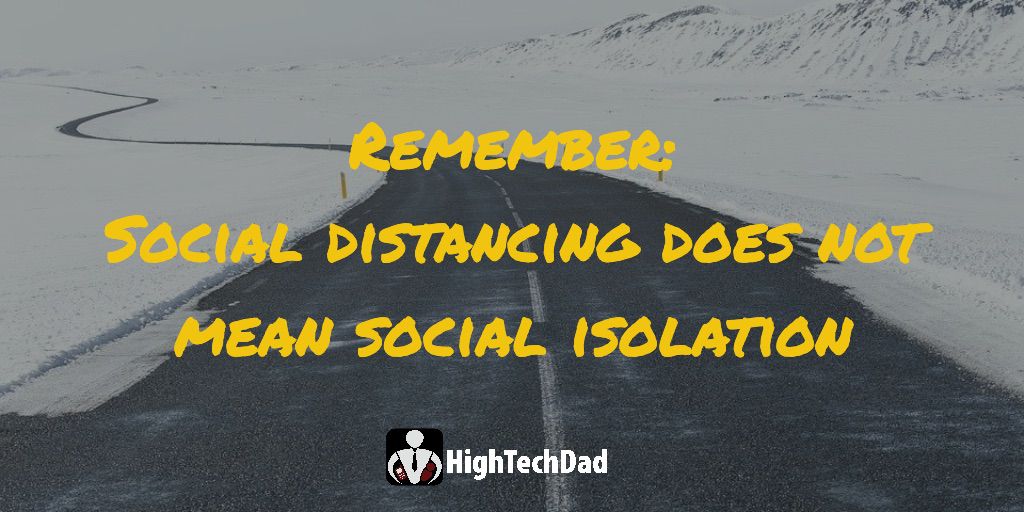For the past few weeks, I have wanted to write something about the Coronavirus (COVID-19), but I haven’t simply because there is already a tremendous amount of information being shared, the most crucial of which is medical related. I’m not a doctor nor a medical professional, nor a statistician nor an emergency responder. I will leave the critical information dissemination to the news media and those professionals. And I encourage you to digest all of that information and hopefully not over-rotate or panic. But something struck me over the past few weeks that I wanted to share, the more that I thought about it. It has to do with how we can “combat” social distancing with tools already available to us, specifically social media. But, I’m not talking about the panicked, over-sharing on Twitter or Facebook on toilet paper or how government agencies aren’t responding fast enough or in the proper way. There is plenty of that. I’m talking about how to maintain some aspect of social normalcy in a time where human contact is essentially, not allowed.
In the past few weeks, my work and countless others have been recommending or requiring people to work from home to reduce the number of human interactions radically. It’s a wise move, especially if you have the means to do it. And, more recently, schools and universities are making the same shift to online learning. Businesses and educators desire to attempt to have some sort of continuity and movement forward instead of stopping dead in your tracks, paralyzed.
So, we are all shifting, as best as we can to remote locations. It is this social distancing that will hopefully slow the dramatic spread of Coronavirus just a bit. The more we isolate ourselves and reduce interactions with others, the better. But this is a hard thing. And while it may be good from a disease prevention perspective, it can pose challenges to our own soul, psyche, and mental well-being.
I have three girls, two teenagers in high school and a twenty-one year old who is a professional ballet dancer (another story for a different day as the Fine Arts are severely impacted by these same social distancing protocols and the prevention of mass groups of people gathering for things like performances). My girls are deep into their peak of social interactions. They are forming bonds, building friendships, and sharing experiences. But all of this is coming potentially to a screeching stop.
Or is it?
Believe it or not, this younger generation has grown up with the tools to combat the isolation of social distancing extremely well—Social Media.
For this group, sharing videos, chatting, messaging, and online social interactions is second nature to them. And it is something that I feel all of us can learn from. Personally, because of being a parent as well as being in the tech industry and because of the writing I have done over the years with HighTechDad, I have closely watched the evolution of tools, apps, and technology to better equip us for this time of hardship we are facing. So this is what I want to write out as a minuscule contribution to the tsunami of content being produced about COVID-19.
Social Media Apps & Tools
As I was driving my oldest daughter back from San Francisco after she cleared out her ballet locker for the unforeseeable future (all rehearsals and SF Ballet performances have been canceled), we started talking about social distancing. It was with her as we spoke about it that I came up with the topic for this article.
We discussed the physical aspect of social distancing—that face-to-face contact was something that we will temporarily have to put on hold. But as I watched my daughter swipe through Instagram photos and send messages, I realized that it was only just that—a physical distance.
But it doesn’t have to be an emotional distance.
If you have a smartphone which many of us do, you have the tools actually to reduce the physical gap but in a digital way.
As we drove, we started testing out various social media apps to see what features were literally at our fingertips.
Instagram has video chat and messaging. Facebook Messenger does, as well. So does Snapchat and WhatsApp and Slack, and many other social media apps. Pretty much all major (and minor) social media apps have means to connect with other people instantly, regardless of your location, via voice, video, and messaging.

Tips for Kids
-
Don’t ask your parents for playdates or to hang out with people
-
Set up a school, exercise, and sleep schedule and stick to it
-
Help around the house (your parents are probably a bit stressed out)
-
Stay digitally connected with your friends and renew past friendships
If you have a Google Android or Apple iOS smartphone or tablet, you have those same tools built-in as well. You can make a phone call, text, or message someone, or even conduct a face-to-face video, even with multiple people, all literally from your hands.
Similarly, there are smart home devices you can use to place calls or do a video chat from a distance with friends, family, or loved ones. Check out any of the following devices:
Each of these, if you have two of them, are fantastic for video calls with friends and family.
We take this social technology for granted now, but actually, these social applications will be incredibly important during the coming months, especially if we have to remove or reduce our social interactions.
So, while social distancing is required, social media “gathering” as I call it, will also be required.
On our drive, my daughter tested just a few of the social applications I mentioned above, calling me directly from the apps. It was literally a click and an instant connection.

Tips for the Older Generation
-
Ask your kids or grandkids for tips on tech
-
Be sure to socialize digitally
-
Refrain from even small gatherings like dinner parties
-
Ask for help in general (for shopping, setting up tech, etc.)
And, as we finished crossing the San Francisco Bay Bridge, we saw the Grand Princess cruise ship that was berthed in Oakland, still containing passengers who were waiting to disembark as well as the 1000-person crew who were still on board. It was a stark reminder of current events and the importance of being connected.
A Work Example
One of the advantages of working in tech is having the tools to be able to work remotely yet still collaborate with teammates. At my work (I work at AppDynamics, which is a part of Cisco), we rely heavily on two primary collaboration tools. I’m not talking about the phone or email. Those are both important, but a bit “old school.” In the Marketing department, it is all about using Slack for instant communications (messaging and file sharing) and WebEx for video conferencing and screen sharing and collaboration.
I’m lucky that these two tools are built into the DNA of our work.
Recently, when we were all instructed to work at home for the near future, it became evident that the lack of face-to-face physical interaction had the potential to create relationship gaps within our day-to-day work. In the office, you could drop by someone’s desk or have coffee together or have a meeting physically in a conference room. These activities were now no longer possible.
But a digital workspace can be dynamic. And it was interesting to see what evolved on our Marketing Slack “channel” (where all of us marketers chatted). People started posting photos of their home offices from around the globe. Then came photos of favorite nooks within the home (a couch, a corner, a chair). Then were the photos of favorite coffee mugs.

Tips for Work
-
Embrace video conferencing beyond just for work
-
Social activities can still be done via chat or video collaboration
-
Stick to your regular schedule (shower, exercise, work, and sleep)
-
Think outside of the box for business continuity
Suddenly this messaging channel was full of personality and warmth and friendship. (Actually, it was always that way, but this time it was more personal, and I feel, essential to maintaining business continuity and relationships.)
As WebEx is a Cisco company, we embrace it fully in our day-to-day work environments. Many of us have devices dedicated to WebEx video collaborations at our home. To that end, we are going to try some social interactions in the coming weeks—things like virtual lunches where we all stuff our faces with food but each person remotely. And I think that we may try a virtual online happy hour as well.
The point of these examples is to say that using social apps or collaborative technology in the workspace does NOT just have to be about work. As we are now confined to work at home until the Coronavirus is under control and we can physically return to work, we need to ensure that we maintain our personal relationships, even at work.

Tips for Adults
-
Help all generations where you can
-
Refrain from physical, social interactions
-
Set an example by using collaborative technology and social media apps
-
Check in regularly with friends and family
I would recommend that you embrace the collaboration technology available to you now, and use it to both continue to push your business forward, but also maintaining those work relationships.
In fact, many of these collaboration tools are free to use for the short term. WebEx, Microsoft Teams, Go-To-Meeting, Zoom, and Google Hangouts are waiving fees or lifting restrictions currently for the short term to allow people to collaborate and ensure business continuity.
Let’s Get Digitally Social!
If you are a parent and your kids are not allowed to get together with friends or go to school, you may want to lessen your control on the amount of time your children spend on their devices or social media or just chatting with their friends. They are doing their own type of continuity, sharing stories, thoughts, feelings, and experiences in a time when getting together as a group is impossible.
And there is something to be learned here for those of us in older generations. At times it is hard to adapt and evolve and embrace new things. And using technology might not come as naturally to those that are older as it does to those who are young. But now, we all should make the best attempts for friendship continuity, and currently, the best way to do this is via apps and devices that connect you digitally.

Tips for Parents
-
Allow kids to be on Social Media (with limits per your own family decisions)
-
Discourage physical hangouts or playgroups
-
Ensure kids have good collaborative tools for friends, family, and schoolmates
-
Check your child’s tech to ensure it is updated and safe
If you are tech-savvy, help someone who is less so. Ensure those less savvy understand how they can use FaceTime to talk to their family across the globe. If you aren’t tech-savvy, find someone who is, and ask them for some help. The key here is that through digital connections, we can still maintain and grow the bonds of family and friendship.
Do you have other tips or ideas? Please share!
Unfortunately, these are times that require extreme measures. If you don’t follow these measures, you are putting others at risk, including yourself. Embrace the digital collaboration generation and technology! By doing so, you are reducing the risk of possible exposure and contamination.
Please stay safe and healthy!
HTD says: Social distancing does not mean social isolation. Use your digital networks and devices to connect with others, whether they are down the street or across the globe. Physical separation should never be a barrier.





